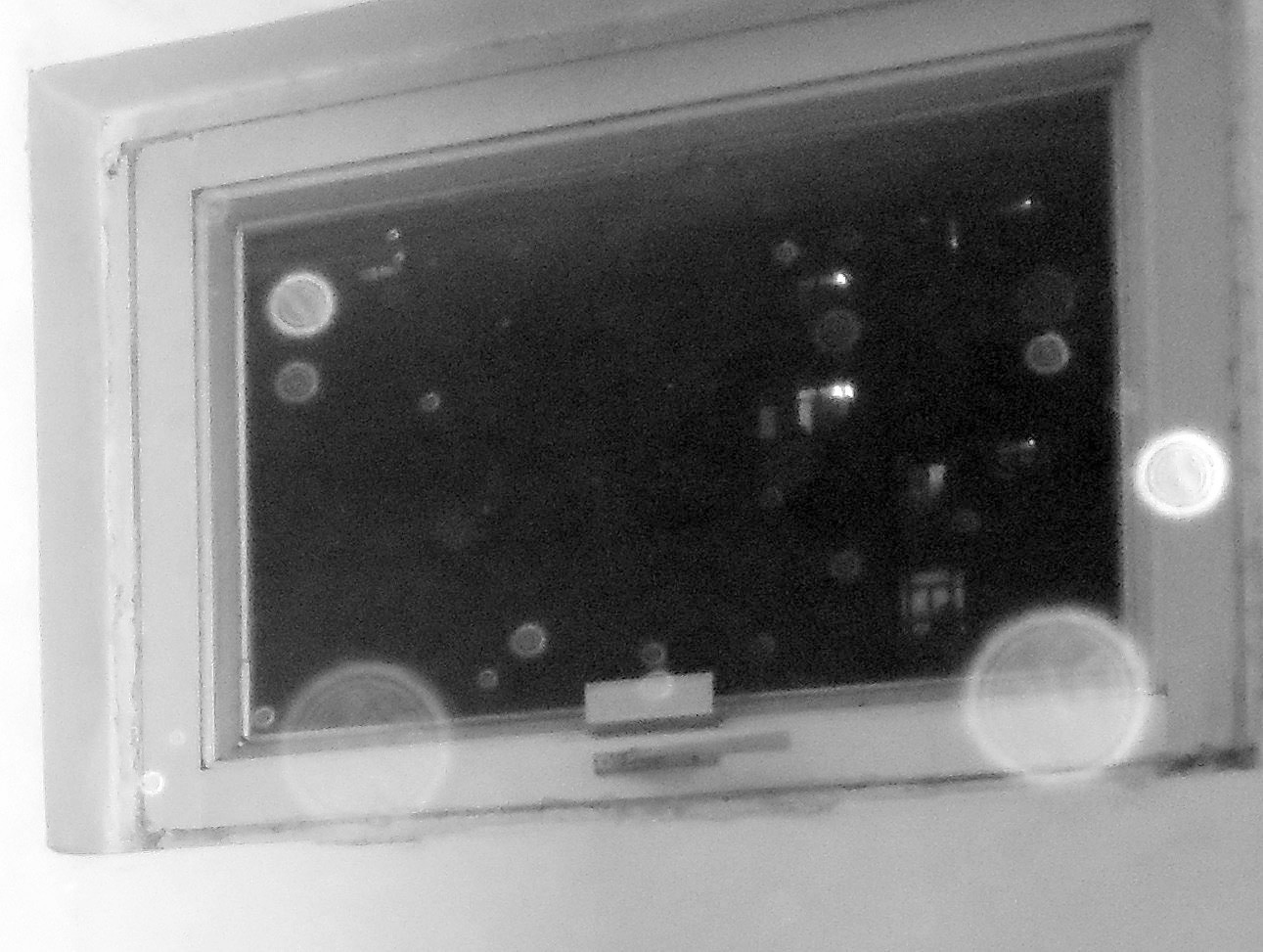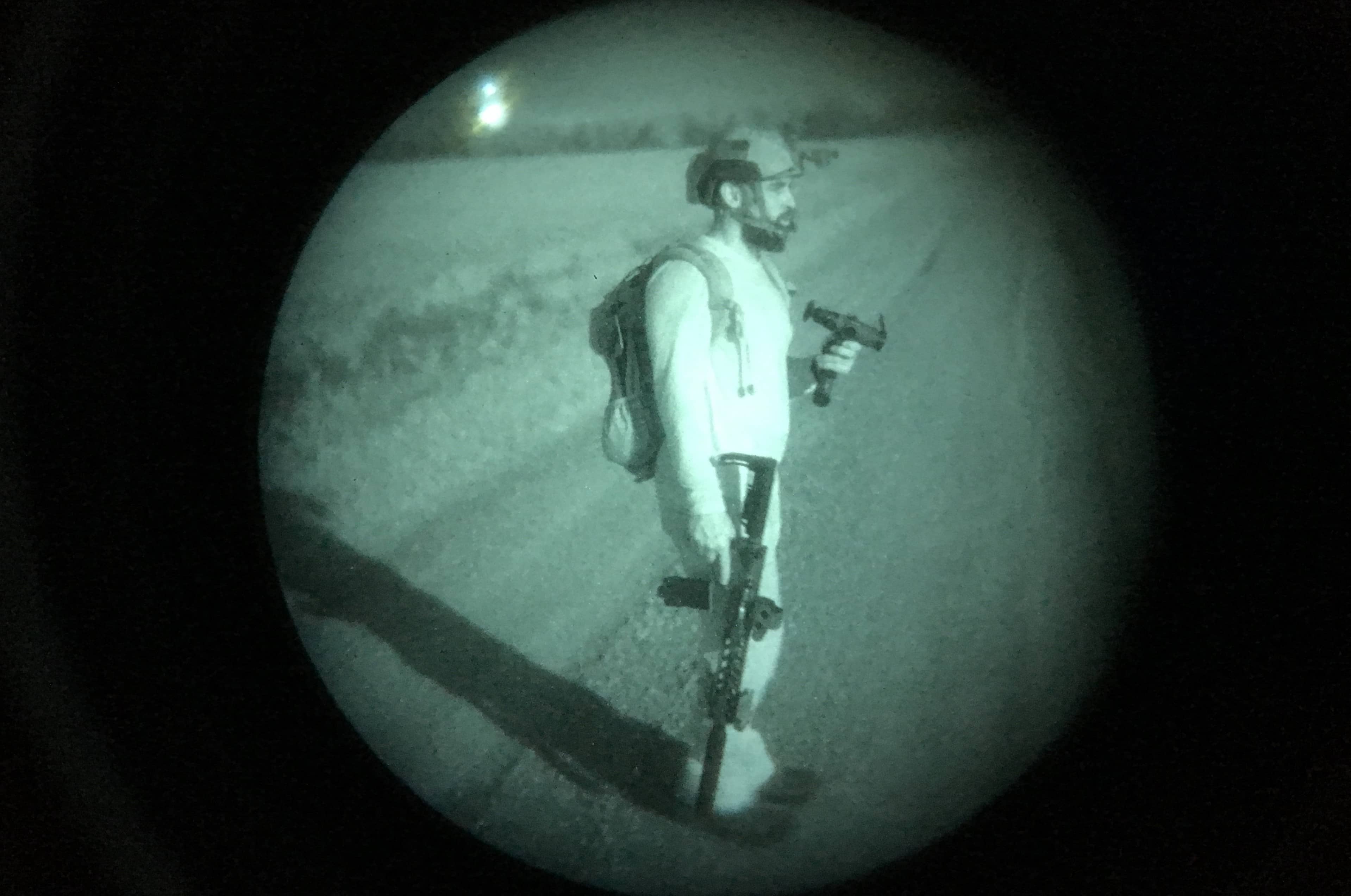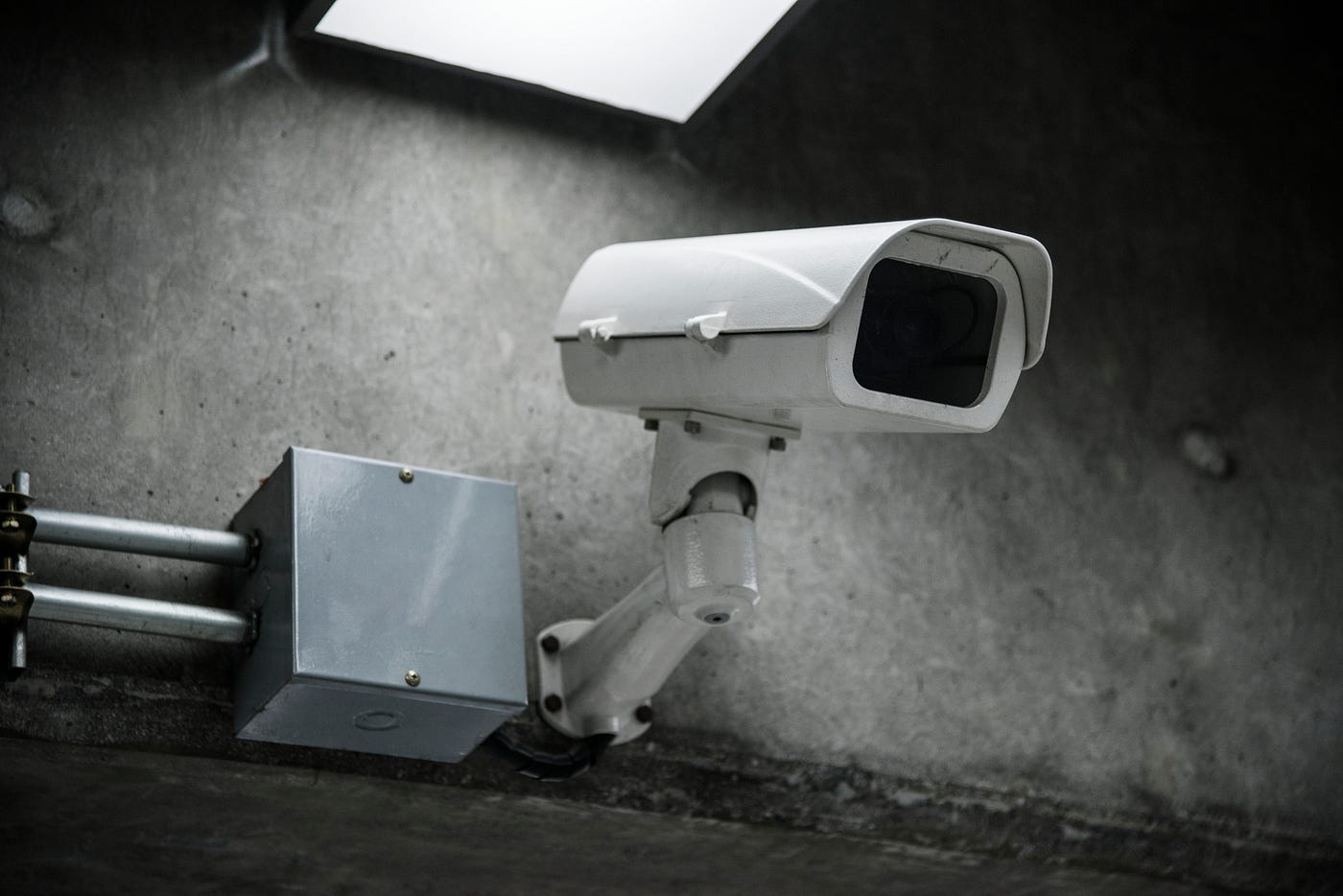Home>Home Security and Surveillance>What Does Night Vision Camera Recording Look Like In A Photo


Home Security and Surveillance
What Does Night Vision Camera Recording Look Like In A Photo
Modified: October 20, 2024
Discover how night vision camera recording appears in a photo with home security and surveillance equipment. Explore the benefits of enhanced visibility in low-light conditions.
(Many of the links in this article redirect to a specific reviewed product. Your purchase of these products through affiliate links helps to generate commission for Storables.com, at no extra cost. Learn more)
Introduction
Welcome to the world of home security and surveillance. In an era where technology has become an integral part of our lives, it is essential to prioritize the safety and protection of our homes. Home security systems and surveillance cameras have become an increasingly popular choice for homeowners seeking peace of mind and protection against potential threats.
One key aspect of home security and surveillance is the use of night vision cameras. These innovative devices are specifically designed to capture clear and detailed footage in low-light or no-light conditions. Whether you need to monitor your property at night or in dimly lit areas, night vision cameras provide a reliable solution to keep your home safe and secure.
In this article, we will delve deeper into the world of night vision cameras and explore how they work, the impact of night vision on image quality, and what night vision camera recordings look like in a photo. This thorough understanding will allow you to make informed decisions when it comes to choosing the right home security system for your needs.
Key Takeaways:
- Night vision cameras use infrared technology to capture clear footage in the dark, but image quality can be affected by factors like ambient light and camera specifications.
- Night vision images may appear grainy or pixelated, but they serve a crucial purpose in home security, enabling us to monitor our properties and detect potential threats, even in complete darkness.
Understanding Night Vision Cameras
Night vision cameras are a specialized type of surveillance camera that are designed to operate in low-light conditions. They utilize advanced technologies to capture clear and detailed footage even in total darkness. Understanding how night vision cameras work is crucial to appreciating their capabilities and limitations.
Most night vision cameras employ infrared (IR) technology, which involves the use of infrared light to illuminate the scene and capture images. Unlike visible light, which is reflected off objects and detected by our eyes, infrared light is not visible to the human eye. However, night vision cameras are equipped with sensors that can detect this infrared light and convert it into visible images or video.
There are two primary types of night vision technologies used in cameras: active infrared (AIR) and passive infrared (PIR). Active infrared cameras emit their own infrared light to illuminate the scene, while passive infrared cameras rely on the natural infrared radiation emitted by objects in the environment.
Regardless of the specific technology used, night vision cameras work by collecting the available infrared light and amplifying it to create a visible image. This amplification process is achieved through the use of an image intensifier tube, which multiplies the amount of light gathered by the camera’s sensor, resulting in a brighter and more detailed image.
It’s worth noting that the range and clarity of night vision cameras can vary depending on factors such as the quality of the camera, the distance between the camera and the subject, and the ambient lighting conditions. Some advanced night vision cameras offer extended range and enhanced image quality, while others may have limitations in terms of distance or image clarity.
Now that we have a basic understanding of how night vision cameras work, let’s dive into the specifics of night vision camera recording and how it affects the quality of the footage captured.
Night Vision Camera Recording
Night vision camera recording is the process of capturing and storing footage in low-light or no-light conditions using specialized cameras. These cameras are equipped with infrared technology that allows them to see in the dark and produce clear and detailed recordings.
When it comes to night vision camera recording, there are a few key factors to consider:
- Resolution: The resolution of a night vision camera determines the level of detail in the recorded footage. Higher resolution cameras can capture finer details, resulting in clearer and more recognizable images. It is important to choose a camera with a resolution that meets your specific needs and expectations.
- Frame Rate: The frame rate measures the number of frames per second (fps) that the camera records. A higher frame rate allows for smoother motion in the footage, which can be advantageous for capturing fast-moving objects or activities. However, higher frame rates can also require more storage space.
- Storage: Night vision cameras record footage onto storage devices such as DVRs (Digital Video Recorders) or NVRs (Network Video Recorders). The amount of storage required depends on factors such as the camera’s resolution, frame rate, and the length of time you want to retain the footage. It is important to ensure that you have sufficient storage capacity to accommodate your recording needs.
- Compression: To optimize storage space and network bandwidth, many night vision cameras use compression algorithms to reduce the size of the recorded video files. Common compression methods include H.264 and H.265. While compression can help save storage space, it may also result in a slight loss of quality. Balancing compression settings is crucial to maintain a good balance between storage usage and image fidelity.
Night vision camera recording is a crucial aspect of home security and surveillance, providing a visual record of any activities or incidents that occur in low-light conditions. These recordings can be invaluable for identifying intruders, monitoring suspicious activities, or simply keeping an eye on your property when you are away.
Next, let’s dive deeper into the impact of night vision on image quality and how it affects the overall viewing experience.
The Impact of Night Vision on Image Quality
Understanding the impact of night vision on image quality is crucial for evaluating the effectiveness of night vision cameras. While night vision technology enables cameras to capture footage in low-light or no-light conditions, it’s important to manage expectations regarding the image quality.
One of the main factors that can affect image quality in night vision cameras is the level of ambient light available. Night vision cameras rely on infrared light to capture images, and the amount of ambient infrared light present in the environment directly influences the clarity and detail of the recorded footage.
In situations where there is a sufficient amount of ambient infrared light, such as in outdoor environments with streetlights or indoor settings with some source of illumination, night vision cameras can produce relatively clear and detailed images. However, as the level of ambient infrared light decreases, the image quality may become grainier and less defined.
Another factor that can impact image quality is the distance between the camera and the subject. Night vision cameras typically have a limited range in which they can effectively capture clear images. As the subject moves farther away from the camera, the image may become less detailed and more prone to distortion.
Additionally, the capabilities and specifications of the specific night vision camera being used can also affect image quality. Higher-end cameras often offer advanced features such as improved sensors, better image processing, and enhanced lens quality, resulting in superior image clarity and detail.
It’s also worth noting that image quality can be impacted by external factors such as weather conditions, camera positioning, and camera settings. Adverse weather conditions, such as heavy rain or fog, can affect the visibility and overall quality of the recorded footage. Proper camera positioning and settings adjustments, such as focus and exposure, can help optimize image quality in different lighting conditions.
Understanding the limitations of night vision cameras in terms of image quality is essential for setting realistic expectations. While night vision cameras can provide valuable surveillance footage in low-light conditions, it’s important to recognize that the resulting images may not always be as crisp and detailed as those captured in well-lit environments.
Now that we have explored the impact of night vision on image quality, let’s move on to comparing night vision images with standard images to further understand the differences.
When using a night vision camera, the recorded photo will appear in shades of green and black, as the camera captures the infrared light that is invisible to the human eye. This allows for better visibility in low light or complete darkness.
Comparing Night Vision Images with Standard Images
When comparing night vision images with standard images, it’s important to understand that the two are captured under completely different lighting conditions, resulting in distinct visual characteristics and differences in image quality.
Standard images are captured in well-lit environments where there is ample visible light available for the camera’s sensor to capture detailed and vibrant images. These images typically have high color accuracy, sharpness, and clarity, making them visually appealing and easy to interpret.
On the other hand, night vision images are captured in low-light or no-light conditions where there is limited visible light available. The primary source of illumination for night vision cameras is infrared light, which is not visible to the human eye. As a result, night vision images often have a grayscale or greenish tint, as it is the most common color variation used to represent infrared light in the images.
Compared to standard images, night vision images may appear grainy or pixelated, especially in situations where there is minimal ambient infrared light. This is due to the camera’s sensors relying heavily on amplification and processing techniques to enhance the available infrared light and produce a visible image. While advancements in technology have significantly improved the image quality of night vision cameras, some level of image degradation is still common in low-light conditions.
Another notable difference between night vision and standard images is the field of view. Night vision cameras often have a narrower field of view compared to standard cameras. This is because the camera’s lens gathers and focuses incoming light differently in low-light conditions, resulting in a reduced coverage area. It’s important to consider this aspect when positioning night vision cameras to ensure optimal coverage and surveillance of your property.
Despite the differences in image quality and color representation, night vision images serve a specific purpose in home security and surveillance. They enable homeowners to monitor their properties, detect potential threats, and provide evidence in case of criminal activities or unwanted intrusions, even in complete darkness. While they may not have the same visual appeal as standard images, they are vital for ensuring the safety and security of your home.
Now that we have compared night vision images with standard images, let’s explore some examples of night vision camera recordings captured in photos to get a better visual understanding.
Examples of Night Vision Camera Recording in Photos
Visual examples are a great way to understand the capabilities and image quality of night vision camera recordings. Below, we present a few examples of night vision camera recordings captured in photos:
Example 1: In this photo, taken in complete darkness, a night vision camera captures the entrance of a home. Despite the absence of visible light, the infrared sensors of the camera are able to detect the surrounding objects and the person approaching the door. The image appears in shades of green as a result of the color representation of infrared light.

Example 2: In this photo, taken in a dimly lit outdoor area, a night vision camera captures the backyard of a property. The image showcases the level of detail that can be achieved in low-light conditions, with objects in the scene clearly visible. The grayscale color representation, common in night vision recordings, adds a distinct aesthetic to the image.

Example 3: This photo showcases the advanced capabilities of a high-resolution night vision camera. The image was captured in a poorly illuminated parking lot and demonstrates the camera’s ability to produce clear and detailed images, even at a significant distance. The use of infrared light ensures visibility in the absence of natural light sources.

These examples demonstrate the potential of night vision camera recordings in capturing valuable surveillance footage in low-light conditions. While the images may have a different color representation and slight degradation compared to standard images, they provide crucial information and visual evidence for home security and surveillance purposes.
It’s important to note that the quality and capabilities of night vision cameras can vary depending on the specific model and technology used. Investing in a high-quality night vision camera with advanced features can significantly enhance the image quality and overall surveillance experience.
Now that we have explored examples of night vision camera recordings, let’s conclude with a brief summary.
Conclusion
Home security and surveillance are crucial aspects of maintaining peace of mind and protecting our homes. Night vision cameras play a vital role in ensuring the safety and security of our properties, allowing us to monitor and record activities even in low-light or no-light conditions.
Throughout this article, we have gained a deeper understanding of night vision cameras, including how they work, the impact of night vision on image quality, and what night vision camera recordings look like in photos. We have learned that night vision cameras utilize infrared technology to capture clear and detailed footage, with the image quality being influenced by factors such as ambient light, camera specifications, and external conditions.
Comparing night vision images with standard images, we have discovered that night vision images may have a grayscale or greenish tint, and can appear grainy or pixelated in low-light conditions. However, these images serve a specific purpose in home security, enabling us to monitor our properties and detect potential threats, even in complete darkness.
The examples of night vision camera recordings we explored demonstrated the capabilities of these cameras in capturing valuable surveillance footage. From recognizing individuals approaching the door in total darkness to monitoring activity in dimly lit areas, night vision cameras provide an essential visual record of events that can assist with identifying intruders and maintaining the security of our homes.
As technology continues to advance, we can expect significant improvements in the image quality and capabilities of night vision cameras. Investing in a high-quality night vision camera with features like higher resolution, advanced sensors, and optimal compression algorithms can enhance the image quality and surveillance experience even further.
In conclusion, night vision cameras are indispensable tools in home security and surveillance, allowing us to keep our homes safe and secure regardless of lighting conditions. By understanding their capabilities, limitations, and the impact of night vision on image quality, we can make informed decisions when it comes to choosing the right home security system for our specific needs.
Frequently Asked Questions about What Does Night Vision Camera Recording Look Like In A Photo
Was this page helpful?
At Storables.com, we guarantee accurate and reliable information. Our content, validated by Expert Board Contributors, is crafted following stringent Editorial Policies. We're committed to providing you with well-researched, expert-backed insights for all your informational needs.














